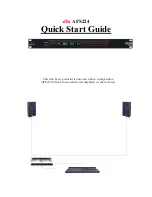
DTX-PCxxS Patch Cord Test Adapters
Users Manual
12
3
Run an Autotest on some patch cords to find one that passes. A PASS* result is
adequate.
4
Save the test results from a compliant patch cord and mark the patch cord ends with
“main” and “remote” as it was connected during the test. Store the reference patch
cord for later use.
Note
To help ensure consistent return loss measurements from
the reference patch cord, do not mechanically stress the
cord. Patch cord properties can change when the cord is
bent or twisted.
When you test the reference patch cord later, use the same
main and remote DTX testers as were used for the initial
test. The serial numbers of the testers are saved with the test
results.
To test the same adapters later, do the following:
1
Connect the reference patch cord between the same main and remote testers used for
the original test. Be sure the marked ends of the patch cord go to the correct testers.
2
Run an Autotest; then save the results.
3
Compare the results with the reference patch cord’s previous results. The difference
between the old and new NEXT and RL results should be less than 0.5 dB near the
PASS/FAIL limits.
4
If the old and new results are more than 0.5 dB apart near the PASS/FAIL limits, the
RJ45 jacks may need replacing. See “Replacing the Adapter's Jacks” on page 9 for
details.
DTX-PCxxS Performance Test Using a DTX-AXTERM Plug
A second method of characterizing and testing the performance of the adapters uses
the DTX-AXTERM link terminator plug, which is available from Fluke Networks.
When you first receive your adapters, you can test both the main and remote adapters
using a DTX-AXTERM plug and save the test results for future reference. Later, you can
use the DTX-AXTERM plug and its results to determine if the adapters’ RJ45 jacks need
replacing or to verify the adapters’ performance.



































